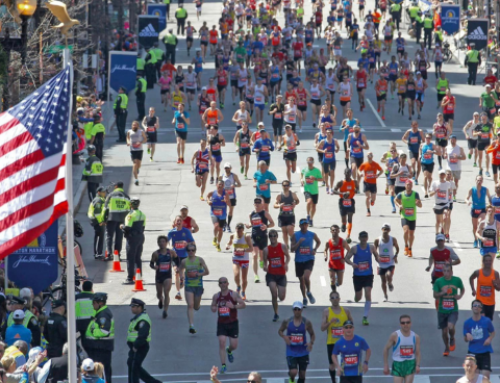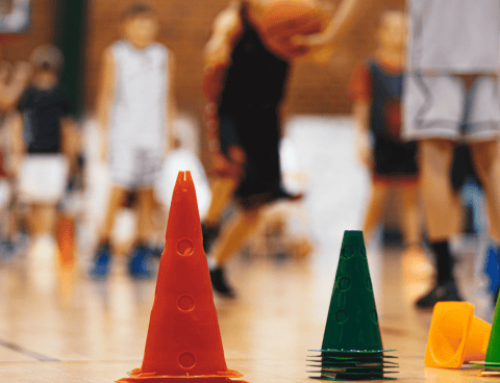Proof That Better Vision Leads to Increased Sports Performance
Strengthening your legs and building a stronger core don’t require a trip to the doctor’s office, so why should improving your performance vision? (Check out What Is Sports Vision Training?) It didn’t make sense to Dr. Jacob Liberman either. he asked, “Why shouldn’t athletes exercise their eyes like they exercise other parts of their bodies?”
“Exercising my eyes not only changed my visual performance but also dramatically affected my entire way of seeing the world,” Liberman says, “From the playing field and in our everyday life, how we ‘see’ holds the key.”
This inventive thinking resulted in the EYEPORT Vision Training System, a potential game-changer in the vision-training world. In 2004, an independent study confirmed the beneficial effect use of the EYEPORT had on the batting performance of Little League baseball players. The study demonstrated a 90% improvement in batting after only three weeks of use.
The study shows the performance effects of improved vision in terms of hitting a curve ball, judging a pitcher’s throwing motion and determining whether a pitch is in the strike zone. It’s no secret that the curve or slider is one of the toughest pitches to hit, but with proper vision training, you can train your eyes to determine the release point of the ball and make a quicker decision, improving your batting average.
The University of Cincinnati relies heavily on vision training for its athletes, claiming that better vision helped them increase their team batting average by 30 points in 2012.
“The opportunity to train players to take in more visual information before they receive the ball has the potential to significantly enhance our game,” said Cincinnati head baseball coach Brian Cleary.
Baseball is just one of many sports where better vision drives on-field success. As a veteran defensive back in the CFL, Phil Jones relies on his eyes to scan the field quicker than the quarterback and react fast enough to make plays. Without any kind of training of his eyes, Jones wouldn’t have had the productive career he did. (See Fundamental Elements of Vision Training.)
“When I was exposed to vision training, it almost immediately changed my on-field persona,” Jones says, “I felt as though I was on my toes all the time, I was so alert! It was a different level of awareness. My performance of interceptions increased dramatically, in practice and games. After retiring, I began to research the world of better vision, where it was often demonstrated to me that we were training the neuro-connection between the brain and the visual system. I continue to train my visual processing system to this day and believe wholeheartedly that better vision can and will benefit every person in overall health and safety awareness as we age, as well as any athlete who wants to maximize performance.”
RECOMMENDED FOR YOU
MOST POPULAR
Proof That Better Vision Leads to Increased Sports Performance
Strengthening your legs and building a stronger core don’t require a trip to the doctor’s office, so why should improving your performance vision? (Check out What Is Sports Vision Training?) It didn’t make sense to Dr. Jacob Liberman either. he asked, “Why shouldn’t athletes exercise their eyes like they exercise other parts of their bodies?”
“Exercising my eyes not only changed my visual performance but also dramatically affected my entire way of seeing the world,” Liberman says, “From the playing field and in our everyday life, how we ‘see’ holds the key.”
This inventive thinking resulted in the EYEPORT Vision Training System, a potential game-changer in the vision-training world. In 2004, an independent study confirmed the beneficial effect use of the EYEPORT had on the batting performance of Little League baseball players. The study demonstrated a 90% improvement in batting after only three weeks of use.
The study shows the performance effects of improved vision in terms of hitting a curve ball, judging a pitcher’s throwing motion and determining whether a pitch is in the strike zone. It’s no secret that the curve or slider is one of the toughest pitches to hit, but with proper vision training, you can train your eyes to determine the release point of the ball and make a quicker decision, improving your batting average.
The University of Cincinnati relies heavily on vision training for its athletes, claiming that better vision helped them increase their team batting average by 30 points in 2012.
“The opportunity to train players to take in more visual information before they receive the ball has the potential to significantly enhance our game,” said Cincinnati head baseball coach Brian Cleary.
Baseball is just one of many sports where better vision drives on-field success. As a veteran defensive back in the CFL, Phil Jones relies on his eyes to scan the field quicker than the quarterback and react fast enough to make plays. Without any kind of training of his eyes, Jones wouldn’t have had the productive career he did. (See Fundamental Elements of Vision Training.)
“When I was exposed to vision training, it almost immediately changed my on-field persona,” Jones says, “I felt as though I was on my toes all the time, I was so alert! It was a different level of awareness. My performance of interceptions increased dramatically, in practice and games. After retiring, I began to research the world of better vision, where it was often demonstrated to me that we were training the neuro-connection between the brain and the visual system. I continue to train my visual processing system to this day and believe wholeheartedly that better vision can and will benefit every person in overall health and safety awareness as we age, as well as any athlete who wants to maximize performance.”













